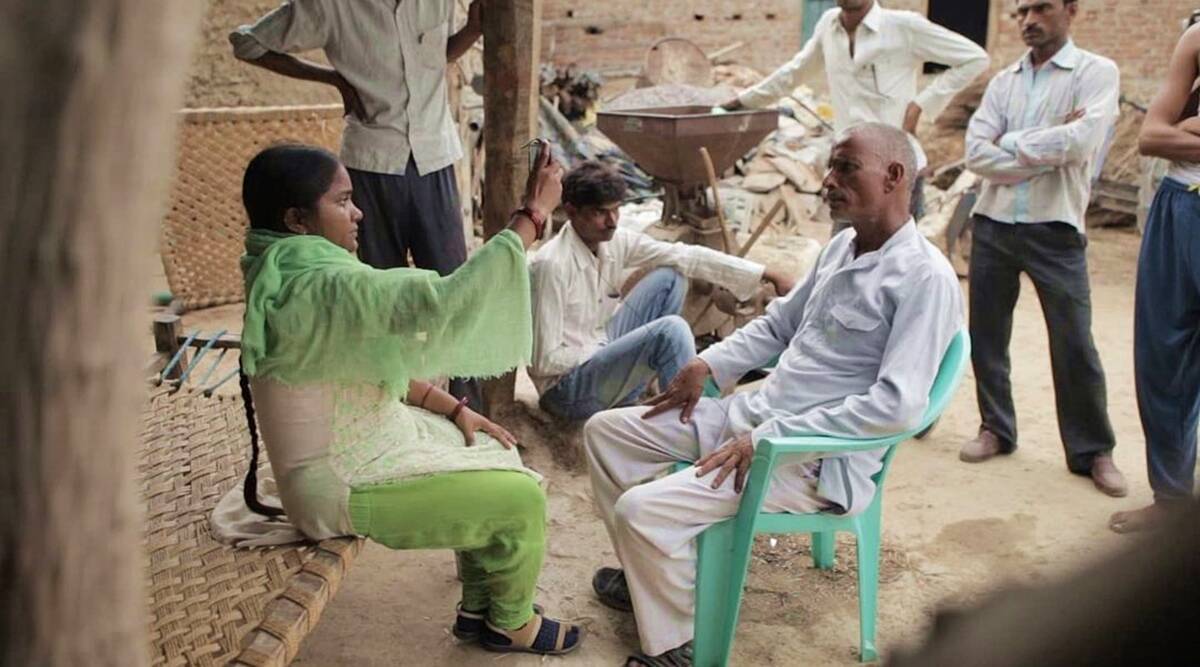Writing with Fire: Dalit women’s fearless fight on silver screen
Amid internet shutdown at the National Capital’s borders, where farmers are protesting against the farm bills, and concerns over freedom of speech, a documentary film by a Delhi-based duo on grassroots journalism has won two awards at the just-concluded prestigious Sundance Film Festival 2021, presented by the non-profit Sundance Institute in United States’ Utah.
Rintu Thomas and Sushmit Ghosh’s Writing with Fire, which also marks their debut as feature directors premiered on January 30th, 2021 in the United States at the fest. This powerful documentary depicts a team of 24 female journalists in the Indian state of Uttar Pradesh and their newspaper, Khabar Lahariya (news waves)’s rise to great heights from humble beginnings. The film follows several years of the team’s journey as they overcome numerous obstacles and keep the reporting, writing and investigation going.
Also edited and produced by Thomas and Ghosh, the film won the special jury award: Impact for Change in the World Cinema Documentary category as well.
Khabar Lahariya, the subject of the documentary film, is the story of the country’s first-of-its-kind rural newspaper run by Dalit women since 2002. It was started by Delhi-based NGO Nirantar from Chitrakoot in Bundelkhand region, located on the borders of UP and Madhya Pradesh. Currently, it is published across UP and Bihar in several dialects of Hindi, including Bundeli and Awadhi.
In the Sundance Film Festival, held last week, Writing with Fire was screened at the ‘World Cinema Documentary Competition’ segment, which features 10 non-fiction feature films from emerging talent around the world and claims to showcase some of the most courageous and extraordinary filmmaking today.
The film focuses on the time where Khabar Lahariya team discusses the start of their transition from print to digital – a change they are hoping will help them reach a wider audience. It is here that we are introduced to Meera, Suneeta and Shyamkali, the team members of Khabar Lahariya as well as the lead characters in the documentary. The film follows these women closely over the course of the next five years, as they fearlessly investigate the biggest news stories in parts of northern India.
An unstoppable team
Writing with Fire opens with chief reporter Meera conducting a heart-wrenching interview with a rape victim and her shell-shocked husband before heading to the police station to ask why authorities were not doing anything to solve the crime. “These men can do anything,” her subject tells Meera. The reporter knows that all too well, but that will not stop her from seeking more than facts; she wants answers.
Each of these women is a Dalit, which lies at the bottom of the Indian caste hierarchy and are often seen as ‘untouchables’. As women at the bottom of the societal heap, they have to overcome insurmountable barriers throughout their lives. Despite these hurdles, it is clear in the film that these women should not be labelled as victims, and Thomas and Ghosh are careful to avoid that stereotype.
Their reporting brings to light injustice and corruption happening all around them and gives a voice to vulnerable people in their community. From coverage of sexual assaults to the rise of Hindu nationalism, Khabar Lahariya is using honest journalism to fight for democracy.
Commenting on journalism
The documentary is set on the backdrop of a time when India’s political climate is volatile – rampant inequality and corruption have become ripe grounds for violence against women, inadequate infrastructure and radicalism.
At the intersection of gender and caste politics, Khabar Lahariya journalists are especially vulnerable to violence and discrimination. Meera, for instance, faces pressure from her husband to assume household responsibilities. Their family faces additional challenges as a result of Meera’s career and has trouble even finding a place to live as landlords are hesitant to give their place to a female journalist from the Dalit class.
A digital landscape and the power to change
As filmmakers, Thomas and Gosh document Khabar Lahariya’s transition to digital, the audience sees their reach grow. They reach over 150 million views on YouTube and start collaborating with national media groups to further expand their reach.
On their watch, violent crimes are brought to light and prosecuted, faulty roads are fixed and rural communities receive electrical and plumbing connections. And all this while most of the women in the team remain under extreme pressures of household responsibilities and ‘preserving family honour’.
Viewers, witness Khabar Lahariya grow in size and influence. However, its increased visibility means not only increased impact for the journalists and their subjects, but the documentary also places the women in the crosshairs of anyone opposed to them and that’s plenty of people, especially as the country enters a key election period.
The personal toll is never far from the frame and while some of the documentary drags as its filmmakers’ cycle through repetitive scenes like a husband rolling his eyes at his wife’s work, a family railing against the impossibility of marrying off their daughter, a puffed-up subject refusing to talk to female journalists, with their personal struggles, real-life issues and the authenticity of depiction on the screen, it also takes the audience very much inside the world of Meera, Suneeta and Shyamkali.










